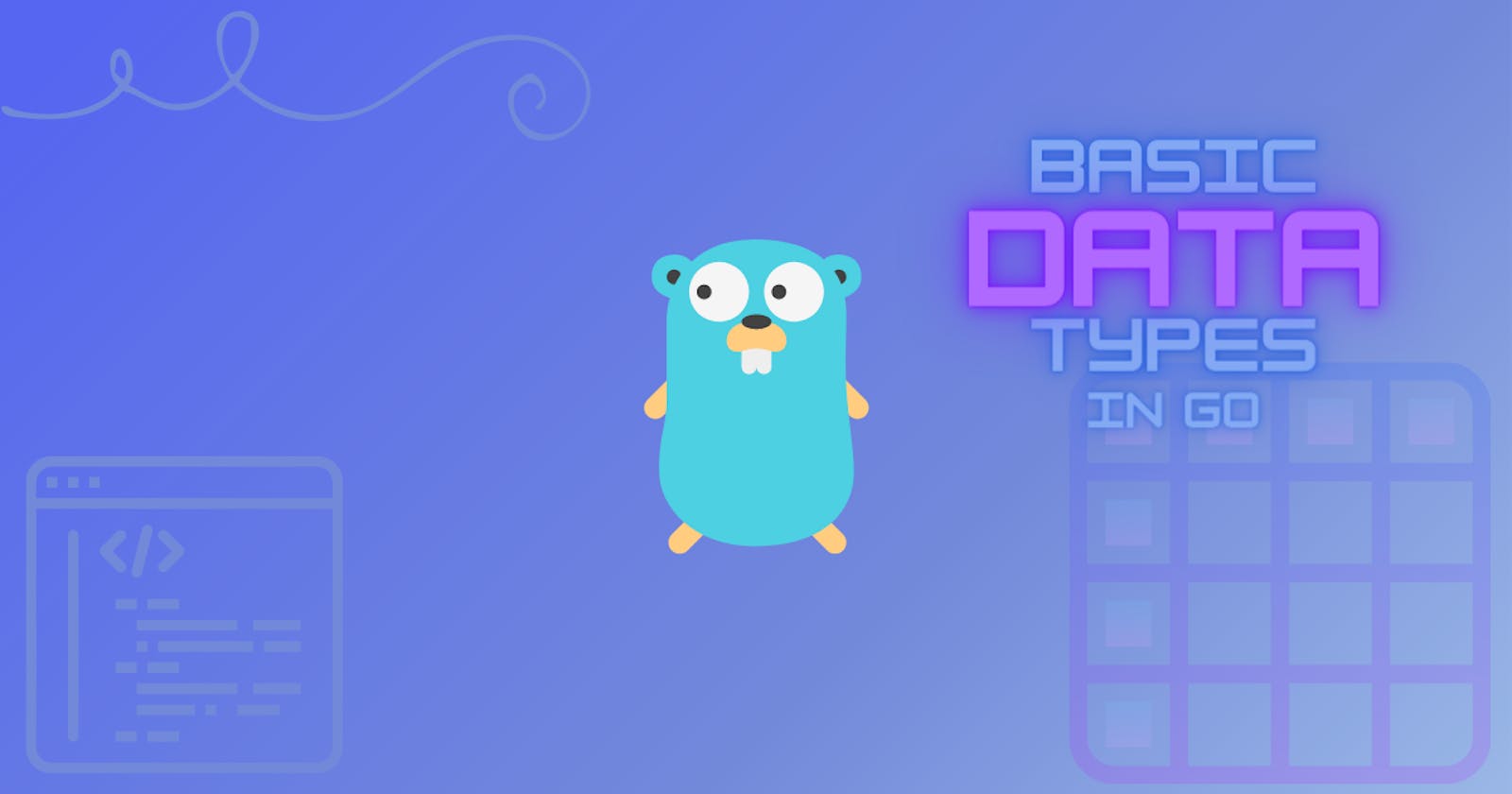All Basic Data Types in GO
Beginners guide to all the basic data types available in GO (golang)
GO has all the basic and advanced data types like other programming languages. Before we dive into the data types, let's first have a look at some conventions in GO.

Filenames in GO
GO code is written and stored in the .go file. The filename itself can consist of lower-case letters by convention. For example codewithab.go is a valid filename by convention. In another case, if file names have multiple words, that word should be separated by _ rather than camel case by convention. Like code_with_ab.go is a valid file name in that case. The main constraints in the filename that cause the filename to be invalid are 👇:
- Including spaces in the filename
- Including special characters like `@`, `#`, `$`
Identifiers in GO
Identifiers are the elements of a program (go program) that are assigned by the user/developer like a variable is defined by the developer. The same is the case for a function name.
Below are some examples of NOT valid identifiers 👇
1codewithab->INVALID(Reason❓: identifier name cannot start with anumber)for->INVALID(Reason❓:foris a special/reserved keyword in GO use to definefor-loops)
If you want to read about all theGOreserved words, you can have a brief look at them here 👈code+with+ab->INVALID(Reason❓: identifier name connot contain special characters)code_with_ab->VALID
Go Data Types
In this article, we will focus and discuss the details about these data types 👇
Strings
String type in GO is basically a slice of bytes type. But here is the interesting fact about this type. GO in fact does not have any byte type but the byte type is an alias for the uint8 type. Pretty confusing right 😵?

Okay, so let's simplify it. In short, the string type is basically a collection of byte types where each character of the string is represented separately.
package main
import (
"fmt"
)
func printIndividialBytes(fullString string) {
fmt.Printf("Bytes: ")
for i := 0; i < len(fullString); i++ {
fmt.Printf("%x ", fullString[i])
}
}
func main() {
name := "Code with AB"
fmt.Printf("String: %s\n", name)
printIndividialBytes(name)
}
/* Output: 👇
String: Code with AB
Bytes: 43 6f 64 65 20 77 69 74 68 20 41 42
*/
Boolean
Boolean is the same as pretty much any other programming language with true and false as options.
var isPaidCustomer bool = true;
Integers Type
Integer types are differed by the memory allocation of the particular variable. To make it more clear. Let's take an example.
Let's define a variable and initialize it with a number and a data type of int8.
var years_of_coding int8 = 3;
In the above example, the variable years_of_coding will take 8 bits of space on memory.
Similarly
- int8 ->
-128 to 127 bits - int16 ->
-32768 to 32767 - int32 ->
− 2,147,483,648 to 2,147,483,647 - int64 ->
− 9,223,372,036,854,775,808 to 9,223,372,036,854,775,807
For unsigned integers
- uint8 ->
0 to 255 - uint16 ->
0 to 65,535 - uint32 ->
0 to 4,294,967,295 - uint64 ->
0 to 18,446,744,073,709,551,615
For unsigned integers, GO documentation clearly says this 👇
Complex numbers are supported by GO. They have the following form 👇:The int, uint, and uintptr types are usually 32 bits wide on 32-bit systems and 64 bits wide on 64-bit systems. When you need an integer value you should use int unless you have a specific reason to use a sized or unsigned integer type.
re + img¡
where re is the real part of the complex number and img is the imaginary part of the complex number.
package main
import "fmt"
func main(){
// To declare complex number (real +imaginary(¡))
var comp complex64 = 5 + 10i
fmt.Printf("The value is: %v", comp)
}
/*
OUTPUT 👇
The value is: (5+10i)
*/
%v is used to print the formatted complex number.
To print real and imaginary parts as separate use %f
That's it from my side for today. I hope you learn something today. If you want to practice along with that I would highly encourage, you can visit the playground here.

